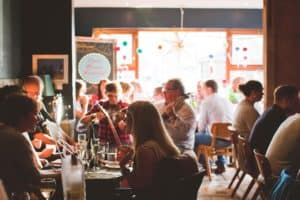The Clurichaun: Unveiling the Mystique of the Leprechaun’s Obscure Relative
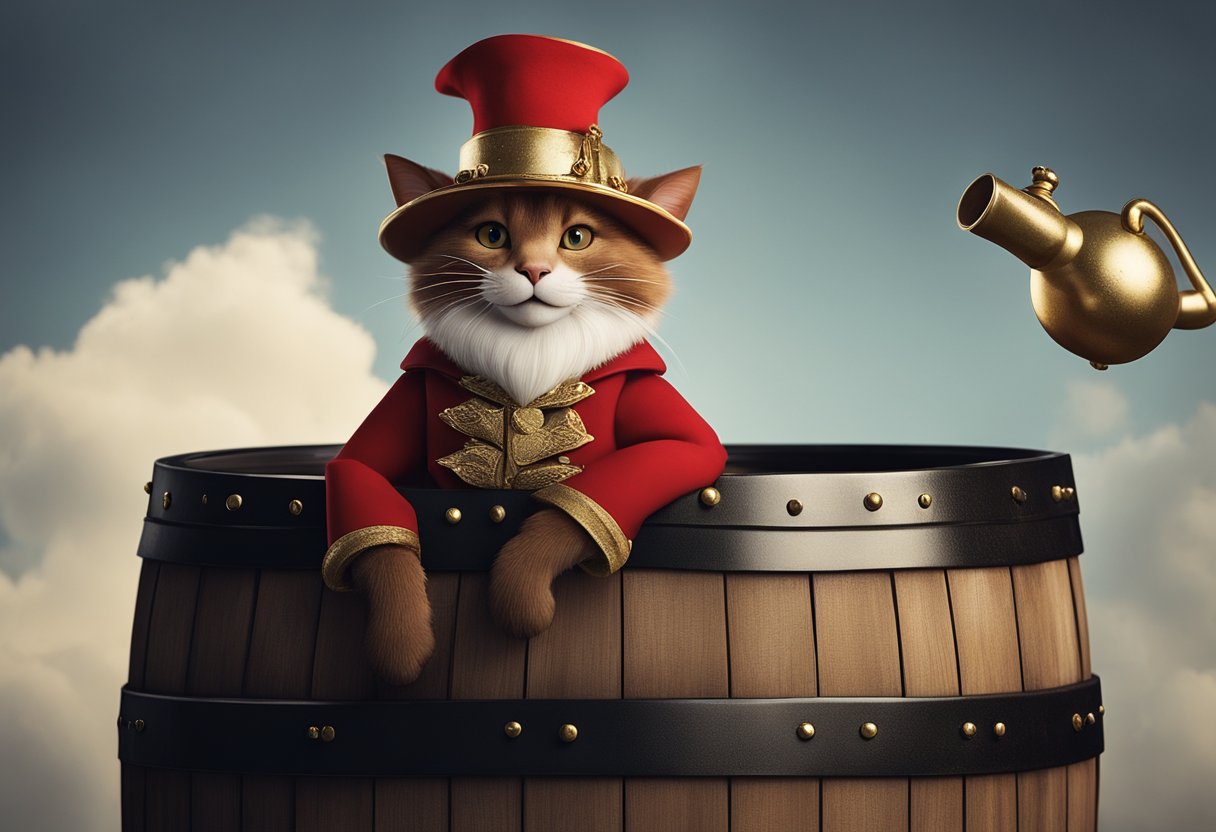
Updated On: March 21, 2024 by Noha Basiouny
When you delve into Irish mythology, you’ll find a tapestry woven with many mystical beings, each carrying their own stories and lore. Among these magical entities is the clurichaun, a figure often overshadowed by its more famous relative, the leprechaun. The clurichaun, though lesser-known, is a fascinating creature in its own right with a distinctly different reputation and set of behaviours.
Unlike the wealth-accumulating leprechaun, the clurichaun is known for its love of drink and merry-making, haunting cellars and public houses and riding sheep and dogs across the countryside at night. According to folklore, these solitary fairies possess a mischievous nature, but they’re also said to protect the cellars they inhabit. Recognisable by their scruffy appearance, the clurichaun is a vital part of the rich tapestry that makes up Irish mythical creatures, offering a glimpse into the country’s cultural heritage and the imagination of its people.
Table of Contents
Origins and History
In this section, we explore the origins of the Clurichaun, delving into its roots in Irish mythology and its connection to the more famous Leprechaun.
Roots in Irish Mythology
The Clurichaun is a fixture of Irish folklore, steeped in the same rich tapestry that contains the Tuatha Dé Danann and other mystical beings of Celtic myths. Our historical understanding tells us these creatures can be traced to pre-Christian times, where they feature in the lore of old. These stories were passed down through generations, encapsulating the essence of Ireland’s cultural heritage.
The Clurichaun and the Leprechaun
Distinct from their Leprechaun cousins, Clurichauns are often depicted as nocturnal counterparts revelling in merriment. While Leprechauns are carpenters or shoemakers in Irish stories, Clurichauns prefer indulging in wine and guarding the cellars. Historically, both have been described as solitary creatures, but it is believed the Clurichaun might have originated as an invention or variation of the Leprechaun to explain away missing or tampered wine.
Physical Description
In our exploration of the clurichaun, we focus now on its physical attributes, which are as intriguing as the legends themselves. These diminutive beings are more than just myth; they embody a distinct identity in Irish folklore.
General Appearance
The clurichaun is often described as a diminutive figure, standing not much taller than a small child. They are commonly depicted as slightly stout, with a ruddy complexion that hints at their fondness for the drink.
Distinguishing Features
Distinct from his more famous relative, the leprechaun, the clurichaun sports a distinct red hue in various tales, earning him the nickname ‘red man’. His sartorial choice often includes a cocked hat and a taste for fine clothing, although not as elaborate as that of the leprechauns.
Habitat and Behaviour
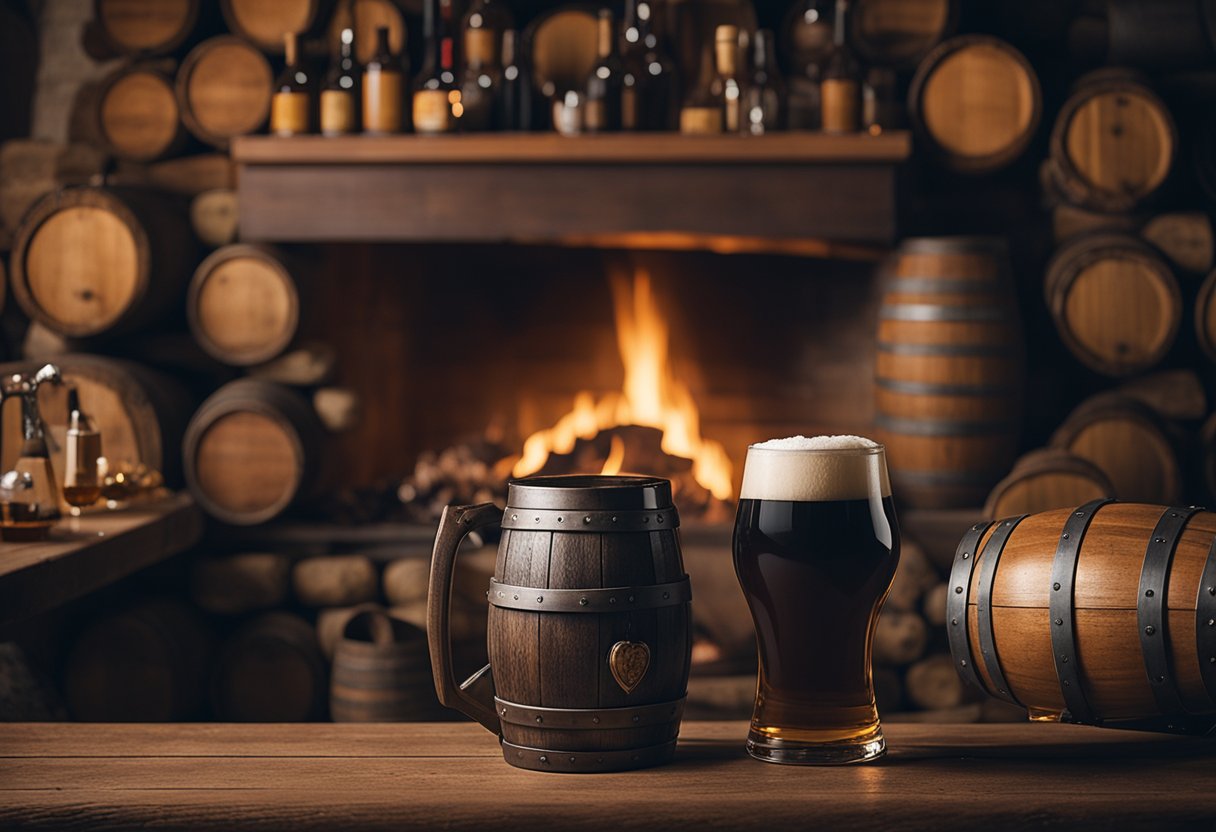
The Clurichaun, often overshadowed by its better-known relative, is a fascinating creature of Irish folklore with distinct habits and preferences for its habitat. We’ll explore the natural environments they frequent and their intriguing ways of interacting with humans.
Natural Environment
Wild locales are the favoured haunts of the Clurichaun, particularly those rich with woods and a lush landscape. These mischievous fairies are drawn to areas that can provide them with the shelter and resources they need, such as cellars, which they are known to frequent. The reason for their affinity towards cellars, especially those attached to pubs and breweries, is due to their legendary love for wine and spirits. This environment provides them not only with sustenance but also a playground for their antics.
Interaction with Humans
The Clurichaun’s engagement with humans is a blend of humorous mischief and potential anger if they are crossed. As a protected species in folklore, they command a certain respect and caution. They might be considered guardians of sorts, especially known for their protective nature over wine cellars. While they don’t shy away from human habitats, their interactions are usually driven by amusement or indignation, making encounters with them unpredictable and best approached with care.
Cultural Significance
In our exploration of Irish folklore, we uncover the cultural significance of the Clurichaun, a figure less famed than its relative, the Leprechaun. Our focus reveals the symbols these creatures represent in Irish culture and their evolving presence in modern media.
Symbolism and Representation
The Clurichaun is deeply rooted in Irish tradition and symbolises adult themes of indulgence and mischievousness. Unlike the Leprechaun, known for wealth and luck, the Clurichaun represents an unrestrained enjoyment of earthly delights, particularly ale and wine. These figures are not as widely recognised but remain integral to understanding the entirety of Ireland’s mythical tapestry.
Clurichaun in Modern Culture
In modern culture, the elusive Clurichaun has gradually emerged from the shadows of the unknown. References to these creatures can be found in literature, captivating the imagination of those intrigued by folklore. Their mischievous nature has been a source of entertainment and fascination, integrating into various forms of media, symbolising a mythical aspect of Ireland’s rich cultural landscape.
The Clurichaun and Other Entities
In exploring the myriad of supernatural entities in Irish folklore, we discover the clurichaun’s unique position within this enchanting realm. Distinguished from its more celebrated kin, the leprechaun, the clurichaun engages with various other creatures in ways that are both fascinating and complex.
Relationship with Fairies
The clurichaun is a captivating figure within the rich tapestry of Irish faeries. Regarded typically as solitary beings, they share traits with the broader fairy family, including a fondness for revelry and mischief. Though not directly ruled by the Fairy Queen, clurichauns maintain a respectful distance from fairy social structures while still partaking in the supernatural world. They are akin to the occasional relatives we meet at gatherings, related yet somewhat removed.
Interaction with Other Mythical Creatures
Among the array of mythical beings, the clurichaun’s interactions are most notable with entities that thrive after nightfall. While they might nod in the direction of a passing banshee, their paths seldom cross in earnest due to differing nocturnal pursuits. Behind the shadows, the clurichaun shares the night with pookas, another class of spirit known for their shapeshifting and pranks; however, it is the clurichaun’s love of drink that sets them apart, often found guarding cellars rather than roaming the moonlit countryside. In this unseen network of the supernatural, clurichauns carve out their mirthful place, as enigmatic as their fairy kin and as distinctive as the stories that give them life.
Magical Attributes
In discussing the Clurichaun’s magical attributes, we focus on their enchantment abilities and their roles in protection and trickery, which are pivotal aspects that define their place in Irish folklore.
Enchantment Abilities
Clurichauns are renowned for their enchantment powers, which often manifest through their interactions with humans. They are said to be capable of enchanting objects, with some tales mentioning a magical purse that always contains a coin, referred to as a ‘lucky shilling’ or ‘spre na skillenagh’, that mysteriously reappears after it is spent. This propensity for enchantment makes Clurichauns a figure of both fascination and caution in folklore.
Protection and Trickery
Far from being mere mischief-makers, Clurichauns also act as guardian spirits, particularly of wine cellars and distilleries, a role steeped in a blend of protection and trickery. They zealously guard these places and use their trickery to ward off any unwanted visitors or thieves. This dual nature reveals a being that is deeply connected to its chosen domain, using cunning and magical influence to maintain its sanctity. Their tricks, though sometimes frightening, serve as a reminder of the unseen powers that watch over certain earthly treasures.
Tales and Legends
In the rich tapestry of Irish folklore, the clurichaun is a figure wrapped in myth and enigmatic stories, often engaging in mischievous pranks. Let us take you through the vibrant folklore surrounding these elusive mythological creatures.
Popular Clurichaun Tales
The clurichaun, known for its fondness of drink and high jinks, is a mainstay in Irish folklore. These solitary creatures are akin to their more famous relatives, the leprechauns. One of the most recognised tales involves a clurichaun named Naggeneen, causing a ruckus by haunting the wine cellar of an Irish lord. This prankster drank voraciously and played frightening tricks on the staff. Reflecting on such stories, it becomes apparent that clurichauns are not just mere legends; they embody the playful spirit feared and respected by those who speak of them.
Moral and Cautionary Tales
Irish folklore is rich with moral and cautionary tales, many of which feature the clurichaun. These narratives served as warnings, often highlighting the consequences of overindulgence and lack of moderation. For instance, a tale might depict the clurichaun as a beacon of warning to those who might fall prey to the excesses of alcohol. Clurichauns were also known to protect the wine cellars of those they took a liking to, but woe betide the cellar owner who neglected their stock, for they might find their wine sour and their barrels empty, courtesy of a slighted clurichaun. Stories like these helped to impress upon the listener the importance of responsibility and care in all aspects of life.
In the weaving of these tales, we see the clurichaun as more than just a myth; it’s a personification of caution and merriment within Irish culture.
Associations with Objects
In Irish folklore, Clurichauns are intimately linked with specific objects that define their nature and activities.
Wine Cellars and Alcohol
Clurichauns have a notorious reputation for inhabiting wine cellars and having an affinity with alcoholic beverages, especially whiskey. They are often found guarding these areas, and folklore suggests that if you treat a Clurichaun well, they may protect your wine or whisky from harm. Conversely, displease one, and they might spoil your entire alcohol reserves.
Objects of Wealth and Craftsmanship
Aside from their connection to spirits, Clurichauns mirror the Leprechauns with their association with objects of wealth. Like their more famous cousins known for their pots of gold, Clurichauns are connected to wealth but with a particular focus on treasures linked to their chosen abode. They are also believed to have knowledge of shoemaking and craftsmanship, skills that are deeply embedded in folklore as practical trades of the fae.
Our portrayal of these enigmatic creatures is not just based on relics of the past but also reflects the values and stories that have stood the test of time through our shared cultural heritage.
The Clurichaun in Literature
In our exploration of literary realms, the clurichaun is a fascinating subject from Irish culture, enriching stories with its mischievous and intoxicating presence.
Depictions in Irish Literature
The clurichaun has left its merry mark on Irish literature, often depicted as a solitary, loveable, if not troublesome character within various stories. These mythical creatures are akin to the leprechaun, yet distinguish themselves through their nocturnal habits and fondness for wine and revelry. Our collective imagination is stirred by the tales of the clurichaun guarding cellars and causing a ruckus after consuming its liquid treasure. Irish folklore presents a rich tapestry where these entities thrive, contributing not only to light-hearted myths but also to a broader understanding of Ireland’s cultural narrative.
Influence on Global Literature
Irish mythological creatures like the clurichaun have undoubtedly impacted global literature, inspiring authors beyond Ireland’s shores to integrate the essence of such figures into a myriad of literary works. Novels, poems, and plays around the world have incorporated or been influenced by the lore of the clurichaun, which attests to the far-reaching fascination with Ireland’s cultural export. These mythic figures from the Emerald Isle, including the clurichaun, weave themselves into global narratives, bringing a touch of Irish enchantment and complex, richly woven characteristics to a wider audience.
Conservation of Myth
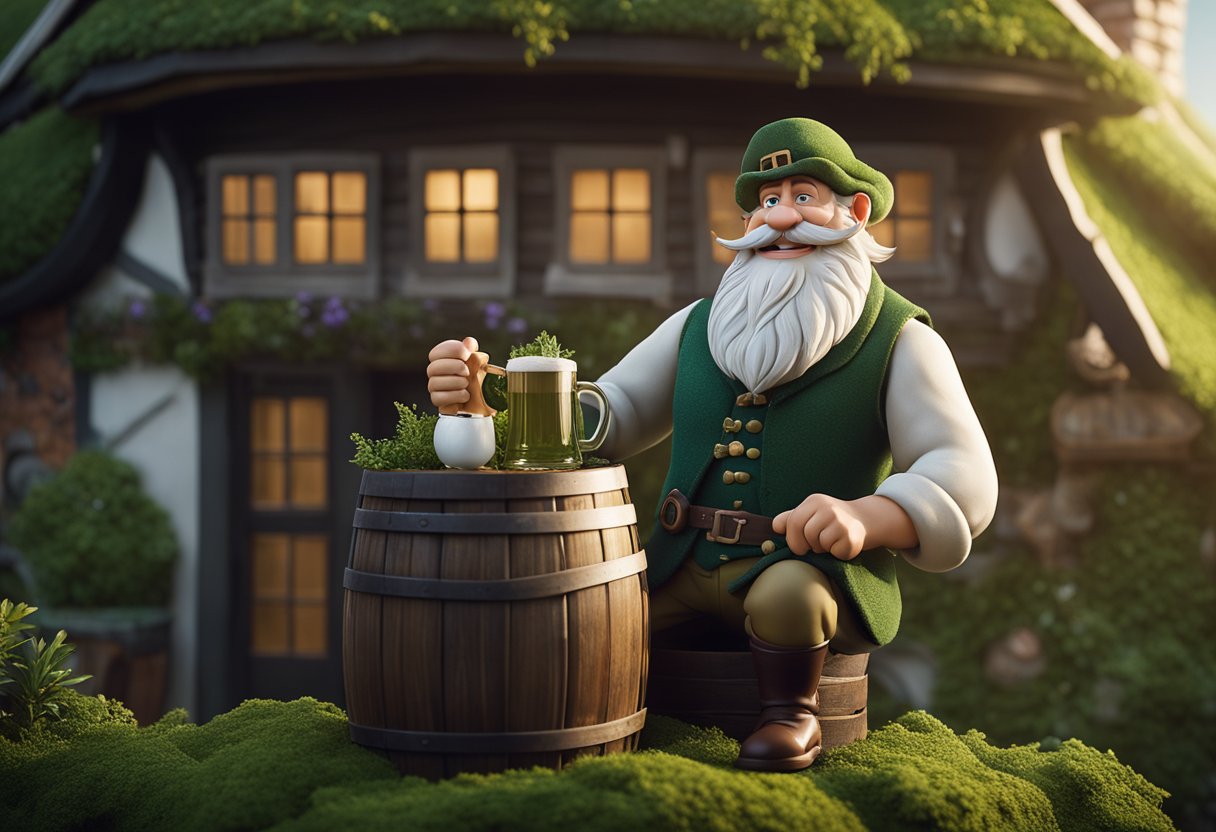
The Clurichaun, akin to its better-known cousin the Leprechaun, is a vital part of Irish mythological tapestry. Our focus in this section is to underscore the importance of conserving such folklore to ensure the continuation of Ireland’s cultural legacy.
Preserving the Clurichaun Lore
The lore surrounding the Clurichaun is embedded within the fabric of Ireland’s cultural heritage. These mythical figures are frequently associated with a love for spirits and a mischievous nature, differentiating themselves from Leprechauns through both their attire and their antics. To preserve this lore, it is crucial that we accurately record and recount the myths connected to the Clurichaun. Academic works, folklore collections, and storytelling traditions serve as the primary vessels through which these tales are transmitted to future generations.
We recognise that in a fast-paced, modern world, these stories might face the risk of being forgotten. Therefore, curating them in accessible formats like interactive websites or engaging multimedia presentations is key. Documentation of Clurichaun stories like those found on Connolly Cove provides valuable insights into our past, ensuring that the particulars of these myths live on.
Contemporary Relevance
It is not enough to merely archive these myths; they must retain relevance in today’s cultural context. The Clurichaun, as an emblem of Irish mythology, can be utilised in various forms of contemporary media to keep public interest alive. This includes the portrayal in books, films, and even online platforms, which can draw connections between historical lore and modern-day themes.
Promoting these myths in current culture bolsters national identity and furthers international recognition of our storied past. Additionally, embracing these elements of folklore in modern narratives allows us to explore and question present-day issues mirrored in the tales of these Irish mythological creatures. Our task is to creatively integrate these legends within the societal fabric, showing that they hold more than antiquarian significance—they embody the ongoing conversation between our history and our collective identity.
Similar Creatures in Folklore
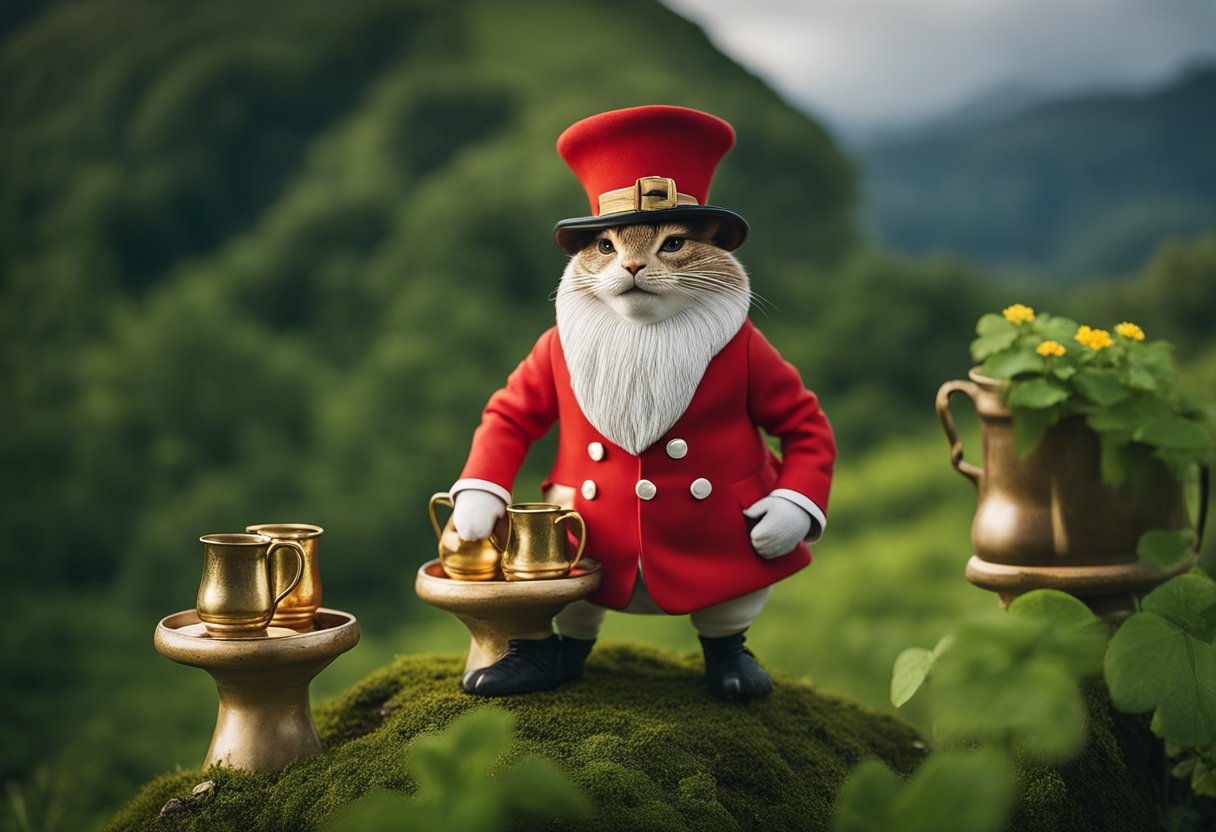
Folklore across cultures is teeming with mythical beings, each with their distinctive narratives and attributes. Our exploration into these will shed light on beings that, while varied in origin, share thematic similarities.
Comparable Beings Worldwide
In our journey through the tapestry of global folklore, we encounter figures that, although distinct, echo traits akin to Irish mythological creatures. The Slavic Baba Yaga is a clear example. Far from the mischievous antics of the Clurichaun, she is typically portrayed as a crone with deep connections to magic and the supernatural. Dwelling in the forest in a hut on chicken legs, Baba Yaga often plays the role of antagonist, but she can just as easily be a source of guidance or aid, blurring the lines between benevolence and malevolence.
Venturing into the Celtic realm, we find the Banshee, a spirit whose mournful wail is said to foreshadow death. While lacking the more light-hearted qualities of the Clurichaun, banshees share a profound connection to Irish families and are deeply woven into the fabric of Celtic mythological creatures.
We invite readers to further explore not just these beings, but the broader world of folklore, where each creature, from the Clurichaun to the distant Baba Yaga, offers a window into the values, fears, and joys of the cultures from which they spring. Through this exploration, we recognise the universal threads that run through the world’s storytelling traditions.
Frequently Asked Questions
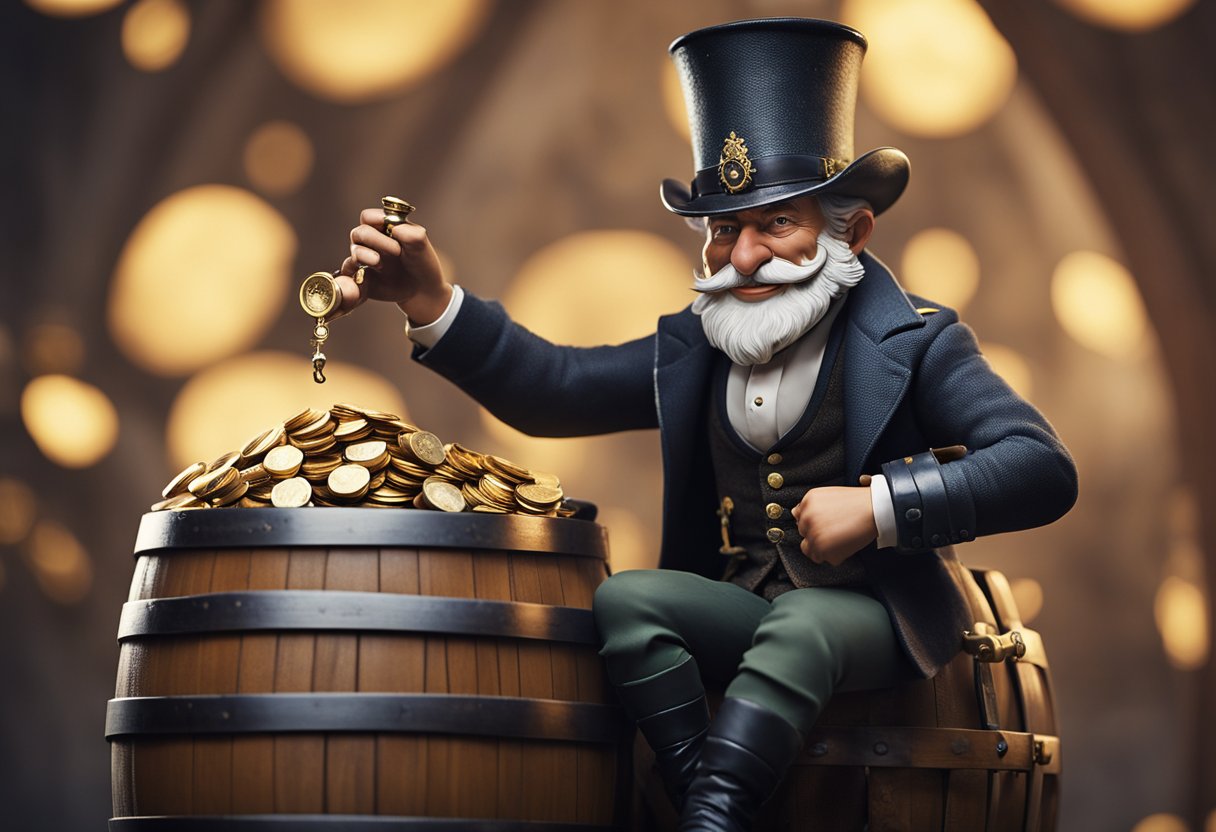
In this section, we address some of the most common curiosities people have about Clurichauns, their distinctive traits, and how they differ from their relatives, the Leprechauns.
What tale surrounds the elusive Clurichaun, known as the relative of the Leprechaun?
The Clurichaun is considered a variant of the Leprechaun within Irish folklore. These elusive figures are known for their mischievous nature and particularly their penchant for guarding wine cellars. There is a legend suggesting that if you treat a Clurichaun well, it will guard your wine for a lifetime, but if ill-treated, it will wreak havoc, spoiling the wine and causing chaos.
How does one properly articulate ‘Clurichaun’, and what are the nuances in its pronunciation?
The word ‘Clurichaun’ is pronounced as /ˈkluːrɪkɔːn/, where the ‘clu’ sounds like ‘clue’, the ‘ri’ like ‘riddle’, and the ‘caun’ similar to the word ‘caution’, without the ‘ti’. It is essential to emphasise the first syllable and allow the ‘r’ to roll slightly to convey the word’s Gaelic roots accurately.
Can you delineate the distinctions between Leprechauns and their cryptic counterparts, Clurichauns?
Although Leprechauns and Clurichauns are often conflated, clear differences define them. Leprechauns are solitary creatures recognised as cobblers and keepers of hidden treasure, often depicted in green attire. Conversely, Clurichauns are recognised for their affinity for wine and spirits, typically donning red or richly-hued garments. They share the aspect of guardianship, but Clurichauns are specific to wine cellars.
What habit is the Clurichaun reputed to indulge in, differentiating it from its Leprechaun kin?
Clurichauns are reputed for their love of drinking, so much so that they are often found haunting breweries and wine cellars. Unlike their industrious cousins, the Leprechauns, Clurichauns are known for their slovenly behaviour and fondness for late-night revelry.
In the hierarchy of Irish folklore, what appellation is given to a congregation of Leprechauns?
In the unique assembly of Irish folklore, a group of Leprechauns is whimsically referred to as a ‘leap’. This term reflects the playful and elusive nature of these creatures, who are rarely spotted in numbers, adding to their mystical aura.
What appellation is accorded to female entities within Leprechaun lore?
Female entities in Leprechaun lore are not frequently mentioned, and thus, there’s no widely recognised term for them within the traditional framework of these myths. However, some stories and modern interpretations occasionally reference female counterparts without a distinct designation.





